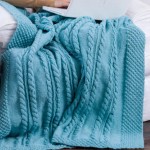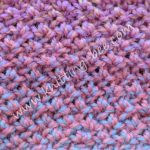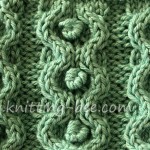Fisherman’s Rib Three Ways Free Knit Stitches.

Fisherman’s Rib is a classic knitting stitch that produces a thick, squishy, and very elastic fabric. It’s characterized by its deep vertical ribs, which are created by knitting into the stitch below the one on the needle (K1B). This creates a double-layered effect, making the fabric exceptionally warm and cushiony. There are several variations of Fisherman’s Rib, all achieving a similar look but with slight differences in texture and firmness. The provided instructions showcase three variations: (A), (B), and (C). All produce the distinctive rib, but (C) is noted for creating a firmer fabric than (A).
Regardless of the variation chosen, Fisherman’s Rib is excellent for projects where warmth, elasticity, and a pronounced rib are desired. It’s a popular choice for scarves, hats, sweaters, and blankets. The deep ribs provide excellent insulation, making it perfect for cold-weather garments. The elasticity allows for a comfortable, snug fit. Because of its thickness, it’s best to use yarns that have good stitch definition and aren’t too bulky. Worsted weight, DK weight, and even sport weight yarns can work well.
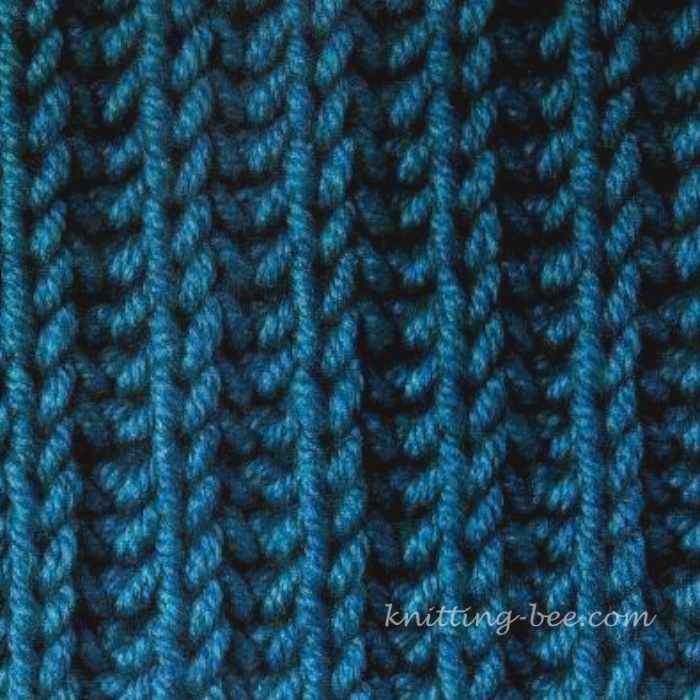
- (A) and (B): Both use K1B to create the rib, but the arrangement of knit and purl stitches differs slightly, leading to subtle variations in the fabric’s texture. (B) uses only knit and K1B on both sides.
- (C): This variation uses a completely different technique involving k2tog, yfon, and slipped stitches. This method creates a denser, firmer rib than (A) and (B).
Note: Each set of instructions gives the same appearance but a different ‘feel’. For example (C) is a firmer fabric than (A).
Abbreviations:
- K: Knit
- P: Purl
- SI 1: Slip 1 stitch purlwise (as if to purl) unless another method is specified.
- K1B: Knit 1 below. Insert the right needle into the stitch below the next stitch on the left needle (into the “head” of the stitch in the row below), knit it, and then drop both the stitch you knitted into and the stitch above it off the left needle.
- k2tog: Knit two together.
- yfon: Yarn forward over needle. Bring the yarn to the front of the work, then over the right needle to the back again. This is similar to a yarn over (YO), but the specific wording is used to clarify the position of the yarn in relation to the slipped stitch.
- sl 1 purlwise: Slip 1 stitch purlwise. Insert the right needle into the next stitch on the left needle as if to purl, and slip it onto the right needle without working it.
- rep: Repeat
- st(s): Stitch(es)
- right side: The “public” or “front” facing side.
- to last # sts: Continue the pattern until the specified number of stitches remain.
- * … *: This indicates the section of the row that is repeated.
- Foundation Row: The first row of the pattern.
Cast On:
(A) Multiple of 2 + 1.
Knitting Directions:
Foundation row: Knit
Row 1 (right side): SI 1, K1B, p1; rep from * to end.
Row 2: SI 1, *p1, K1B; rep from * to last 2 sts, p1, k1.
Rep the last 2 rows only
Cast On:
(B) Multiple of 2 + 1.
Knitting Directions:
Foundation row: Knit
Row 1 (right side): SI 1, *K1B, k1; rep from * to end.
Row 2: SI 1, *k1, K1B; rep from * to last 2 sts, k2.
Rep the last 2 rows only.
Cast On:
(C) Multiple of 3 + 1.
Knitting Directions:
Row 1 (right side): SI 1, *k2tog, yfon, sl 1 purlwise; rep from * to last 3 sts, k2tog, k1.
Row 2: SI 1, *yfon, sl 1 purlwise, k2tog (the yfon and sl 1 of previous row); rep from * to last 2 sts, yfon, sl 1 purlwise, k1.
Rep the last 2 rows.
Half Fisherman’s Rib Free Knit Stitch
Half Fisherman’s Rib is a knitting stitch that creates a textured fabric with prominent vertical ribs, similar to Fisherman’s Rib, but less bulky. It achieves this by knitting into the stitch below (K1B) on only one side of the fabric, hence the “half.” This creates a fabric that is still ribbed and elastic, but not as thick or dense as full Fisherman’s Rib. The provided instructions offer two variations, (A) and (B), which produce the same visual effect but differ slightly in their feel; (B) is described as being firmer than (A).
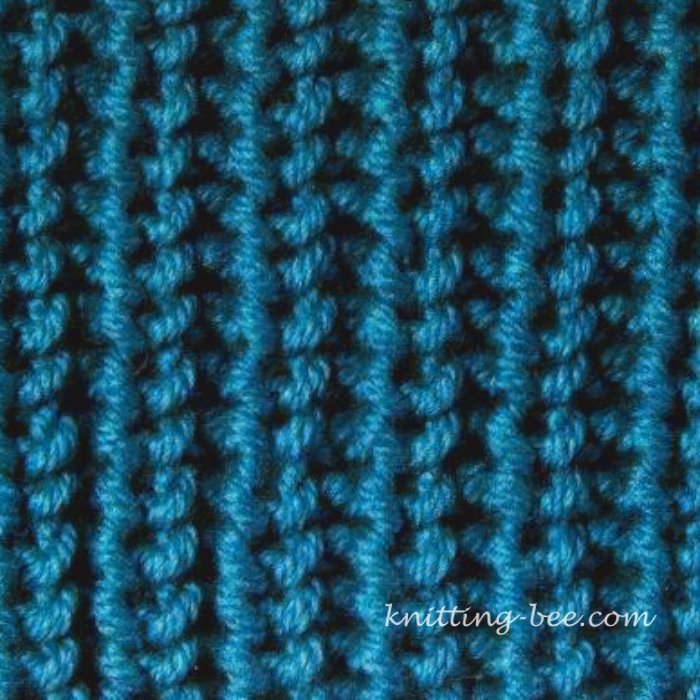
This stitch is a good choice for projects where you want the look of Fisherman’s Rib but with less bulk. It’s suitable for scarves, hats, sweaters, and other garments where you desire some elasticity and texture, but don’t need the extreme warmth and thickness of the full Fisherman’s Rib. Like Fisherman’s rib you want to use yarns with good stitch definition. Worsted, DK and Sport weight yarns are well suited.
Note: Both sets of instructions give the same appearance but a different ‘feel’. (B) is a firmer fabric than (A).
Cast On:
(A) Multiple of 2 + 1.
Knitting Directions:
Row 1(right side): SI 1, knit to end.
Row 2: SI 1, * K1B, p1; rep from * to end.
Rep these 2 rows.
Cast On:
(B) Multiple of 2 + 1.
Knitting Directions:
Row 1 (right side): SI 1, *p1, k1; rep from * to end.
Row 2: SI 1, *K1B, p1; rep from * to end.
Rep these 2 rows.
Contrary Fisherman’s Rib Free Knit Stitch
The “Contrary Fisherman’s Rib” is a variation of the Fisherman’s Rib stitch that, despite its name, doesn’t significantly reverse the typical rib pattern. Instead, it creates a textured fabric with vertical ribs similar to Fisherman’s Rib and Half Fisherman’s Rib, but with a slightly different stitch arrangement that alters the texture and potentially the fabric’s drape. The key element is still the K1B (knit one below) stitch, which creates the characteristic raised rib. The “contrary” aspect likely refers to the shifting pattern of K1B and regular knit stitches across the rows, which breaks up the consistent vertical lines of the standard Fisherman’s Rib variations.
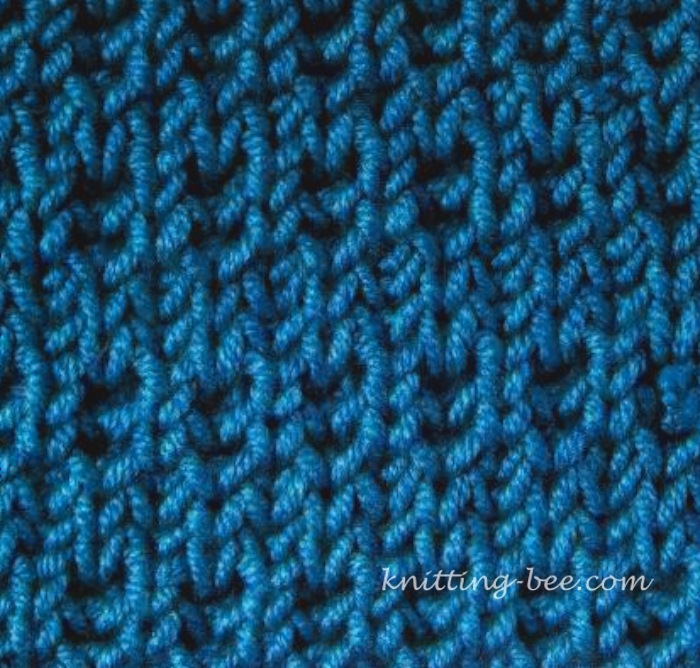
This stitch is a good option when you want the general look and feel of Fisherman’s Rib but with a subtle variation in the texture. It’s suitable for projects similar to those where you’d use Fisherman’s or Half Fisherman’s Rib: scarves, hats, sweaters, or any garment where you want a ribbed, elastic fabric with a bit of visual interest. Yarns with good stitch definition, such as worsted, DK, or sport weight, will work well.
The core of the pattern is the interplay between Row 1 (SI 1, *K1B, k1; rep from * to end) and Row 2 (SI 1, *k1, K1B; rep from * to last 2 sts, k2). These two rows are repeated and alternated in a 10-row sequence, which creates the subtle shift in the rib pattern. It’s important to keep track of which row you’re on to maintain the correct sequence.
Cast On:
Multiple of 2 + 1.
Knitting Directions:
Foundation row: Knit.
Row 1( right side): SI 1, *K1B, k1; rep from * to end.
Row 2: SI 1, *k1, K1B; rep from * to last 2 sts, k2.
Row 3: As Ist row
Row 4: As 2nd row.
Row 5: As Ist row.
Row 6: SI 1, *K1B, k1; rep from * to end.
Row 7: As 2nd row.
Row 8: As 6th row.
Row 9: As 2nd row.
Row 10: As 6th row.
Rep the last 10 rows only.



